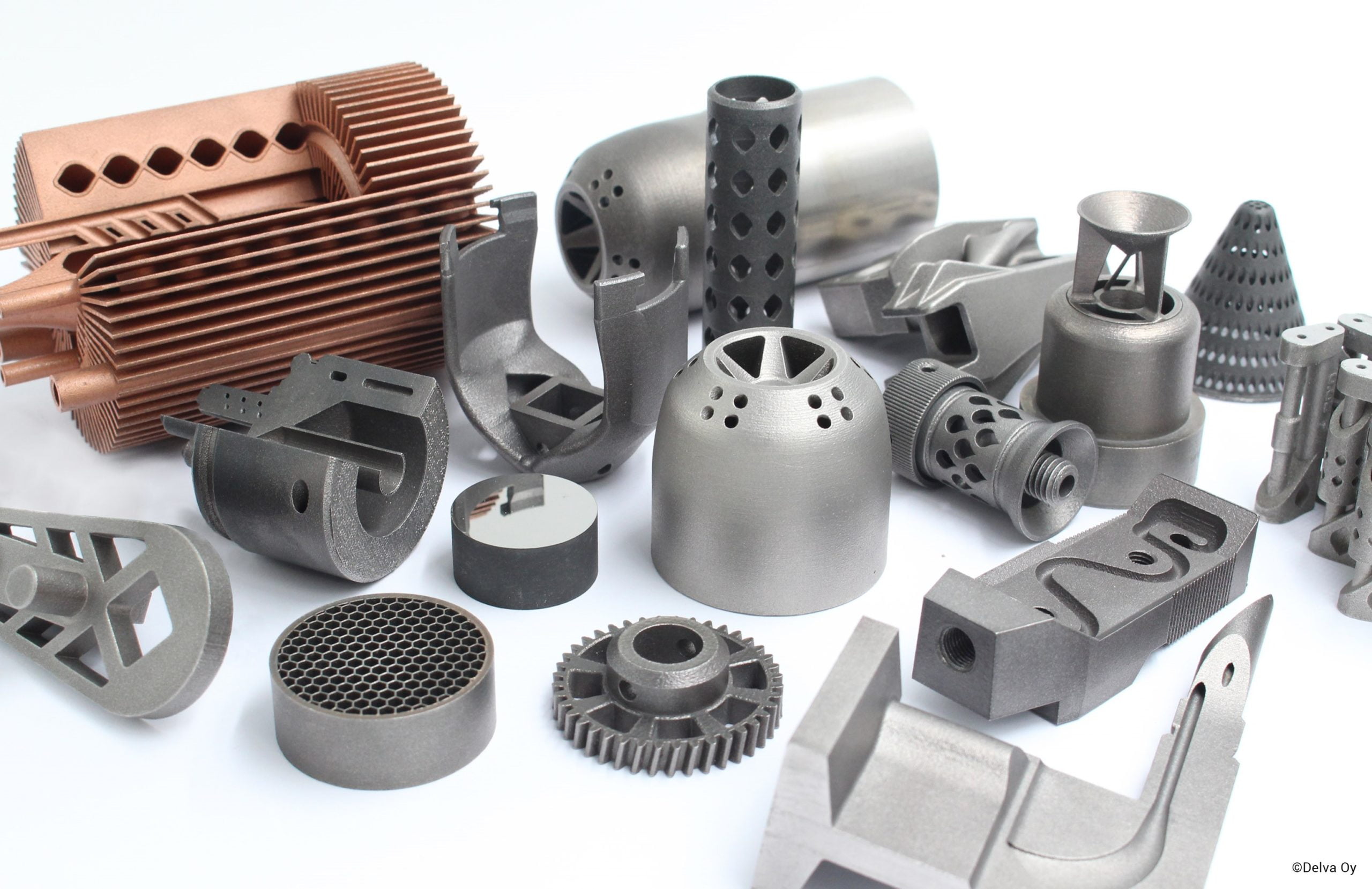In addition to reliable equipment and standardised processes, metal 3D printer manufacturers offer tested materials and parameters. These together make printing relatively straightforward and the printed components consistent and reliable. The basic processes defined by the printer manufacturers are based on the printing of test cubes and work well when printed designs follow the basic rules of additive manufacturing. It is essential to recognise that the desired results may not be as straightforward when printing advanced structures. However, the experts will succeed. In metal 3D printing, there are several identifiable areas of expertise, and we will discuss theses from the perspective of the powder bed fusion (PBF) technology*) in the following.
The design determines the game
Metal 3D printing is an enabler. A lot of design decisions have traditionally had to be made based on manufacturability. Metal printing changes the operational goals and needs to the new starting point.
An ever-increasing number of industrial machine and equipment manufacturers and process industry companies in various industries are aware of the possibilities offered by metal printing and invest in their additive manufacturing design expertise (DfAM, Design for AM). Design engineering agencies that offer DfAM expertise support this progress. From the perspective of utilising metal printing, investments in advancing DfAM design expertise are of significant importance, as the design is the gamechanger. Combining your industry expertise and the principles of design for metal printing creates genuine innovations. However, a well designed is only half done.
We must be able to break the limits
The crux of metal printing is the heat, and it is necessary to control the melting process. If the heat cannot exit the piece during printing in the powder bed fusion process, the piece may overheat and start to warp up from the powder bed, causing problems. In addition, when the printing process, which has continued in some cases for several days, is interrupted toward the end, this will cause significant delay and costs.
It is not always possible to follow the basic rules of design for metal printing and thus avoid problems; further developing existing solutions and printing spare parts often call for a breach of basic design guidelines. A good example is low-angle printing, which disrupts the established 45-degree rule of thumb. Challenges have also been encountered when printing various lattice structures. These are useful structures that can simultaneously both stiffen and lighten printed solutions.
These structures are, therefore, a matter of both technical and economic significance. We must be able to break the limits, and this we do by adjusting the process. There are many variables in the printing process. Leaving it to chance and good luck is not enough. The team conducting the printing must have a profound understanding of the printing process and a determined experimental approach.
Expect profound 3D printing expertise
In printing, each material behaves in its specific way. Therefore, by definition, should industrial-grade prints require impeccable performance. Nominal densities and strength values must be maintained, and process-related adjustments must not impair the other properties of the part. However, it is essential to look at the whole and be able to look outside of the standards when the structures to be printed require it. Even challenging printing runs can be done successfully with minor changes made to the printing parameters.
The printing expert must know very well what they are doing as the parameter changes can affect the material’s performance. The person must foresee the parameter changes and sufficiently be aware of the printed component’s requirements and consider the component’s critical and non-critical points and properties. This accentuates the importance of close collaboration between the designer and the printing expert – and the deep expertise of both.
The importance of thermal management is growing with the increase of multi-laser printers. There is a prevailing trend of glorifying high-power printers with multiple lasers. This trend is understandable since the factor affecting the price of a printed component is, to a large extent, the time spent printing. However, success at high efficiencies requires even more expertise and development work, and the full utilisation of powers and speeds, especially with thermally challenging materials, may not be achieved. Therefore, to succeed with high efficiencies requires higher expertise and development work, and the full utilisation of power and speed, especially with thermally challenging materials, may still not be achieved.
With software development has simulation advanced and progressed into a supporting means for printing. As a result, there are both software and services offered on the market. The simulation can be used to predict the thermal loads during the printing process and the deformations caused by the heat. It is also possible to predict the risk areas of overheating that may affect the material’s structure. The information helps to modify the design of the item for better printing, compensate for possible deformations to achieve sufficient dimensional accuracy, and keep the material properties uniform throughout the component by controlling heat.
Competence will increase in the network
There were three areas of expertise identified here above: substance expertise in one’s own industry, understanding of design for AM, and profound expertise in metal printing itself. A company can surely do everything internally, thus growing competence takes time and requires significant investments. However, with the help of close networks of experts and partnerships, it will be possible to bring together wide-ranging and at the same time profound, comprehensive expertise. All of this may not be achieved by one actor on its own, especially at a time when development is extremely rapid. Therefore, networking is beneficial, without question even necessary, within each area of expertise mentioned above. As an example of this, the seamless cooperation between the printing bureau, the equipment manufacturer, the material supplier, and the machining expert. In addition, the collaboration between research and educational institutions benefits all the areas of expertise. Thus, within the framework of FAME, we all have an excellent opportunity to promote purposeful development and further increase our expertise, together and separately.
The authors underline the strong power of collaboration – also in blog writing.
Kind regards,
Markku Lindqvist, CTO Delva Oy
Marja-Leena Mäkinen, CCO Delva Oy
*) Powder Bed Fusion technology is a mature metal printing technology that excellently meets the needs of the industry. When printing is a thin layer, a few tens of microns thick, even finer than wheat flour, applied to a printing plate. Hereafter the laser, or lasers, melts the layer in the desired cross-section of the pieces growing on the printing plate. In addition to melting the layer of metal powder, the laser also melts several of the previous layers, resulting in a completely compact structure. After each layer is a new layer of metal powder applied, followed by a new melt.
Delva Oy is an experienced partner in industrial metal additive manufacturing. Delva offers co-development that dives beneath the surface to find optimal solutions to the customer’s individual needs. Metal 3D printing, also known as metal additive manufacturing, adds a new dimension to the manufacturing technologies and enables entirely new structures and solutions.
This article was originally published in Finnish on the FAME (Finnish Additive Manufacturing Ecosystem) website on November 8, 2021.

